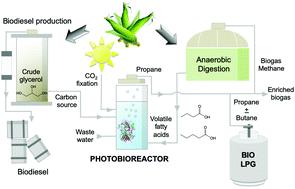当前位置:
X-MOL 学术
›
Energy Environ. Sci.
›
论文详情
Our official English website, www.x-mol.net, welcomes your
feedback! (Note: you will need to create a separate account there.)
Low carbon strategies for sustainable bio-alkane gas production and renewable energy
Energy & Environmental Science ( IF 32.4 ) Pub Date : 2020-05-19 , DOI: 10.1039/d0ee00095g Mohamed Amer 1, 2, 3, 4, 5 , Emilia Z. Wojcik 1, 2, 3, 4, 5 , Chenhao Sun 1, 2, 3, 4, 5 , Robin Hoeven 1, 2, 3, 4, 5 , John M. X. Hughes 1, 2, 3, 4, 5 , Matthew Faulkner 1, 2, 3, 4, 5 , Ian Sofian Yunus 6, 7, 8, 9 , Shirley Tait 1, 2, 3, 4, 5 , Linus O. Johannissen 1, 2, 3, 4, 5 , Samantha J. O. Hardman 1, 2, 3, 4, 5 , Derren J. Heyes 1, 2, 3, 4, 5 , Guo-Qiang Chen 1, 2, 3, 4, 5 , Michael H. Smith 9, 10, 11 , Patrik R. Jones 6, 7, 8, 9 , Helen S. Toogood 1, 2, 3, 4, 5 , Nigel S. Scrutton 1, 2, 3, 4, 5
Energy & Environmental Science ( IF 32.4 ) Pub Date : 2020-05-19 , DOI: 10.1039/d0ee00095g Mohamed Amer 1, 2, 3, 4, 5 , Emilia Z. Wojcik 1, 2, 3, 4, 5 , Chenhao Sun 1, 2, 3, 4, 5 , Robin Hoeven 1, 2, 3, 4, 5 , John M. X. Hughes 1, 2, 3, 4, 5 , Matthew Faulkner 1, 2, 3, 4, 5 , Ian Sofian Yunus 6, 7, 8, 9 , Shirley Tait 1, 2, 3, 4, 5 , Linus O. Johannissen 1, 2, 3, 4, 5 , Samantha J. O. Hardman 1, 2, 3, 4, 5 , Derren J. Heyes 1, 2, 3, 4, 5 , Guo-Qiang Chen 1, 2, 3, 4, 5 , Michael H. Smith 9, 10, 11 , Patrik R. Jones 6, 7, 8, 9 , Helen S. Toogood 1, 2, 3, 4, 5 , Nigel S. Scrutton 1, 2, 3, 4, 5
Affiliation

|
Propane and butane are the main constituents of liquefied petroleum gas and are used extensively for transport and domestic use. They are clean burning fuels, suitable for the development of low carbon footprint fuel and energy policies. Here, we present blueprints for the production of bio-alkane gas (propane and butane) through the conversion of waste volatile fatty acids by bacterial culture. We show that bio-propane and bio-butane can be produced photo-catalytically by bioengineered strains of E. coli and Halomonas (in non-sterile seawater) using fatty acids derived from biomass or industrial waste, and by Synechocystis (using carbon dioxide as feedstock). Scaled production using available infrastructure is calculated to be economically feasible using Halomonas. These fuel generation routes could be deployed rapidly, in both advanced and developing countries, and contribute to energy security to meet global carbon management targets and clean air directives.
更新日期:2020-06-19











































 京公网安备 11010802027423号
京公网安备 11010802027423号